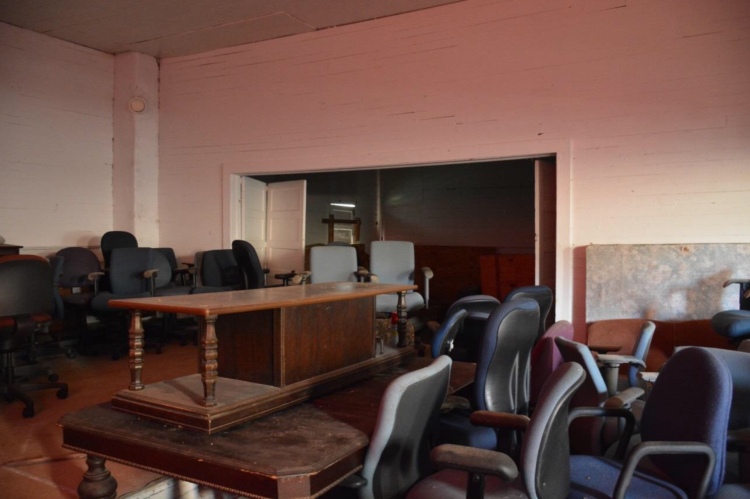The Isaac Chapel Rosenwald School is one of the few surviving Rosenwald schools in Mississippi, constructed nearly a century ago to provide much-needed education for African-American children during the Jim Crow era of racist laws and policies that actively discouraged the education of young black children.
After the landmark 1896 Supreme Court case Plessy v. Ferguson, which sanctioned the “separate but equal” doctrine of segregated school systems, most State and local entities in Mississippi provided funds for white schools, while seriously neglecting schools for African-Americans. In the 1910s, hope for a better educational future for African-Americans came from the newly-established Rosenwald Fund- an alliance between Julius Rosenwald, the President an Chief Executive Officer of Sears, Roebuck & Co, and Booker T. Washington, President of the Tuskegee Institute in Alabama. The first Rosenwald schools began in Alabama, in 1912, though the schools soon spread across the South and to Mississippi. By the early 1920s, there were one hundred and forty-one Rosenwald schools built in Mississippi. The Rosenwald Fund provided various construction plans and a percentage of starting funds to the newly-established schools.

In Marshall County, the Isaac Chapel Rosenwald School, located south of Byhalia, was constructed in 1921-1922 by various entities in Marshall County. According to surviving records, the Rosenwald Fund provided a $1,000 donation, the white community donated $200, and the African-American community provided the remaining $2,600 to fund the creation of the school. The Marshall County public school system contributed nothing to the venture. The Isaac Chapel Rosenwald School, complete by 1922, was a variant of the standard Rosenwald Plan 3-B, which consisted of three classrooms, an industrial room and two closets. All Rosenwald schools were required to be oriented north to south, with windows in the east and west of the building to allow for the maximum amount of natural light. However, the Isaac Chapel Rosenwald School is actually oriented east to west, a significant deviation from the usual Rosenwald standards.
The Rosenwald Fund lasted until 1932, when it closed. The Isaac Chapel Rosenwald School survived for over forty years, educating several generations of African-American children. In 1964, the school closed. Two years later, in 1965, the school became home to a Head Start school, managed by the Child Development Group of Mississippi. The Head Start school closed in 1972, and the building has remained empty since that time, used by the County for storage. Though the exterior of the building has been significantly altered, with the original windows now gone and the original clapboard exterior replaced by masonite panels in about 1970, some exterior components of the Rosenwald school survive, including the unusual native stone steps at the front entrance and the original main door, with a gabled entrance awning supported by triangular braces. The interior of the building remains largely intact, including the large classroom spaces and the rare surviving 5-panel folding doors that separated the individual classrooms.

The Isaac Chapel Rosenwald School is one of only a dozen surviving Rosenwald schools in Mississippi. The importance of the Isaac Chapel School, along with other surviving Rosenwald schools in the State, is hard to overstate. Jennifer Baughn, a historian with the Mississippi Department of Archives and History and expert on the Rosenwald Schools in Mississippi, has stated that the Rosenwald schools were “the only philanthropic effort in the early 20th century to concentrate on improving the learning environment of black students in the South.” In addition, Baughn also remarks that “in a segregated system in which public entities were spending tax money on schools for white children but neglecting black education, the Rosenwald Fund represented the most significant advance in African-American education since the beginning of public education.”
The Isaac Chapel Rosenwald School received Landmark Status (the highest form of historical protection a structure can receive in Mississippi) from the Mississippi Department of Archives and History in 2017.

Thank you to Jennifer Baughn, an architectural historian with the Mississippi Department of Archives and History, for permission to use much of her excellent research on the Mississippi Rosenwald schools in general and the Isaac Chapel school in particular. All archival photographs and plans are courtesy of the Mississippi Department of Archives and History and the Julius Rosenwald Fund.









My first school, so many memories, it was a great school and many of the students went on to become teachers lawyers, politicians, doctors and other distinging jobs; after completing high school and college.
LikeLike
Thank you Annie for this wonderful comment!
LikeLike
I also attended Issac Chapel in the early sixties. I am looking for others who attended and where life has taken them.
LikeLike
Wonderful piece of my home town/county!
Aretha Lester
LikeLike
Beautifully done, Phillip. Bravo!
LikeLike